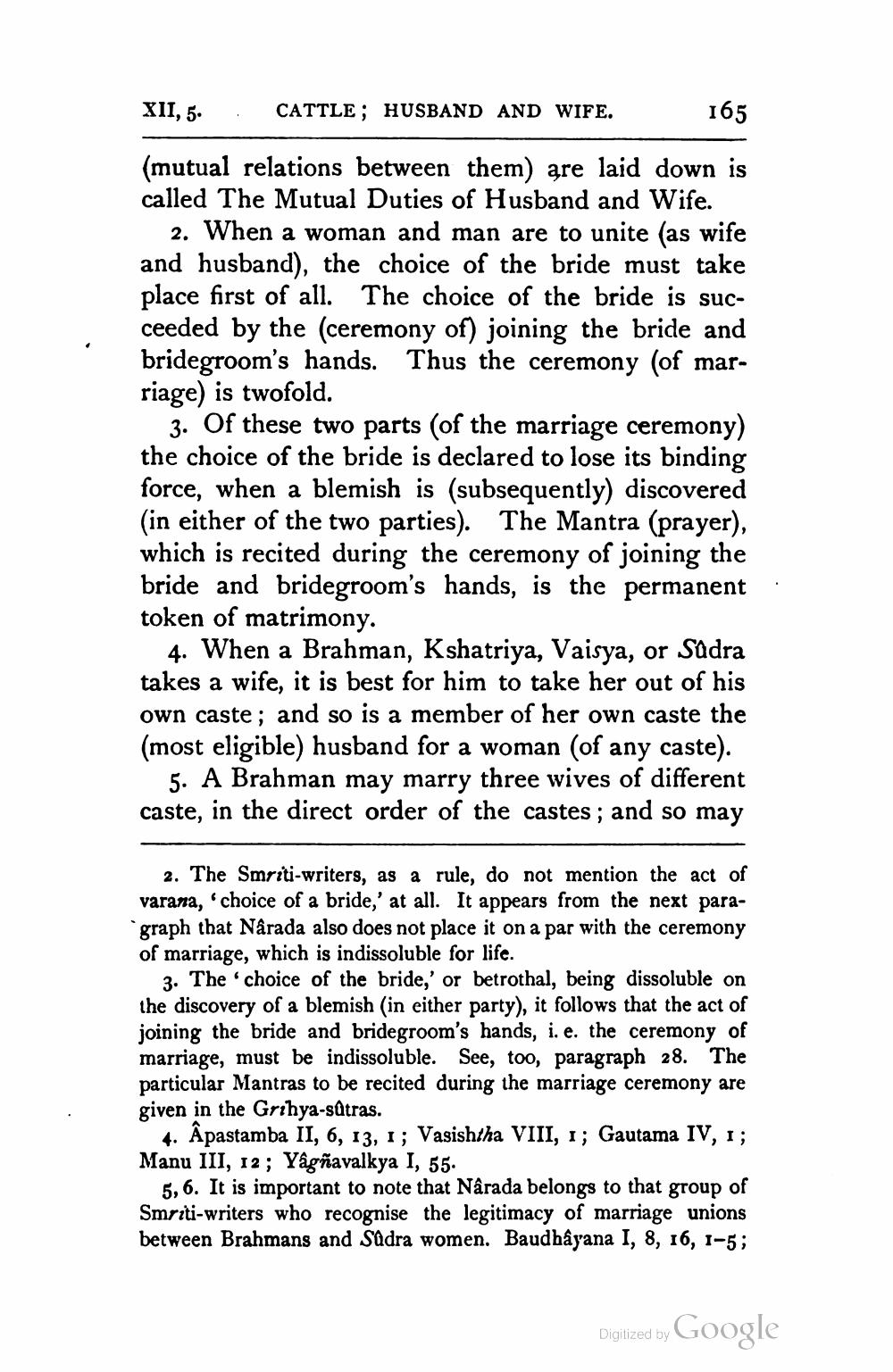________________
XII, 5.
CATTLE; HUSBAND AND WIFE.
165
(mutual relations between them) are laid down is called The Mutual Duties of Husband and Wife.
2. When a woman and man are to unite (as wife and husband), the choice of the bride must take place first of all. The choice of the bride is succeeded by the ceremony of) joining the bride and bridegroom's hands. Thus the ceremony (of marriage) is twofold.
3. Of these two parts (of the marriage ceremony) the choice of the bride is declared to lose its binding force, when a blemish is (subsequently) discovered (in either of the two parties). The Mantra (prayer), which is recited during the ceremony of joining the bride and bridegroom's hands, is the permanent token of matrimony.
4. When a Brahman, Kshatriya, Vaisya, or Sudra takes a wife, it is best for him to take her out of his own caste; and so is a member of her own caste the (most eligible) husband for a woman (of any caste).
5. A Brahman may marry three wives of different caste, in the direct order of the castes; and so may
2. The Smriti-writers, as a rule, do not mention the act of varana, choice of a bride,' at all. It appears from the next paragraph that Närada also does not place it on a par with the ceremony of marriage, which is indissoluble for life.
3. The choice of the bride,' or betrothal, being dissoluble on the discovery of a blemish (in either party), it follows that the act of joining the bride and bridegroom's hands, i.e. the ceremony of marriage, must be indissoluble. See, too, paragraph 28. The particular Mantras to be recited during the marriage ceremony are given in the Grihya-sätras.
4. Âpastamba II, 6, 13, 1; Vasishtha VIII, 1; Gautama IV, 1; Manu III, 12; Yagñavalkya I, 55.
5,6. It is important to note that Narada belongs to that group of Smriti-writers who recognise the legitimacy of marriage unions between Brahmans and Sadra women. Baudhayana I, 8, 16, 1-5;
Digitized by Google




